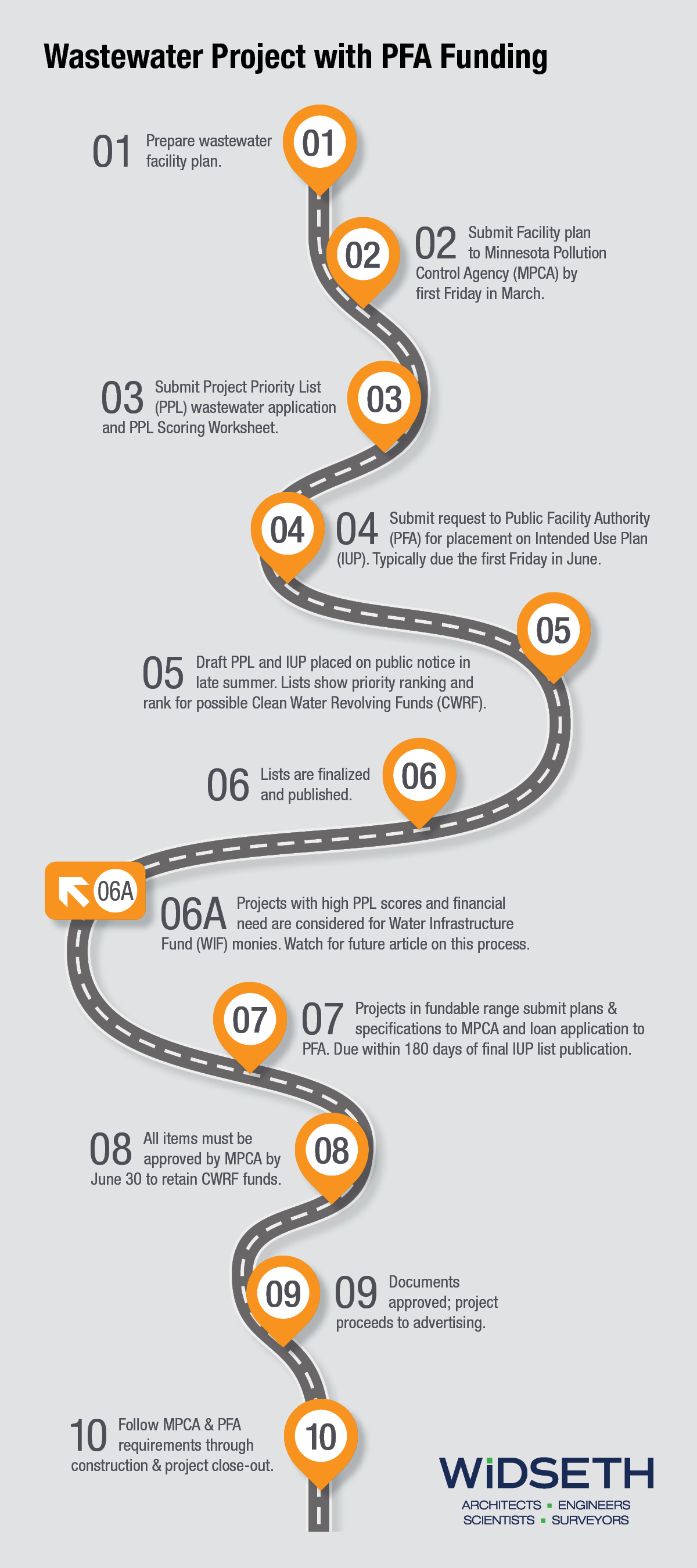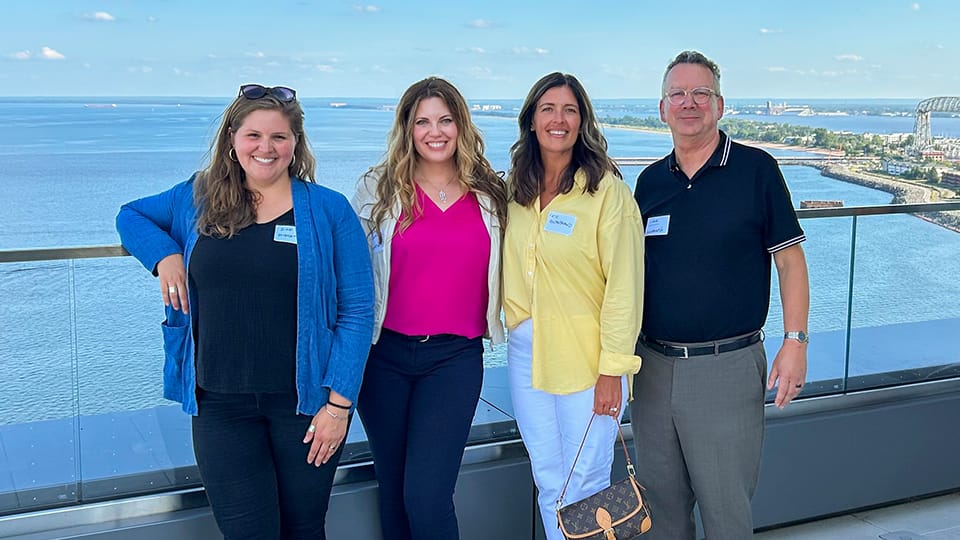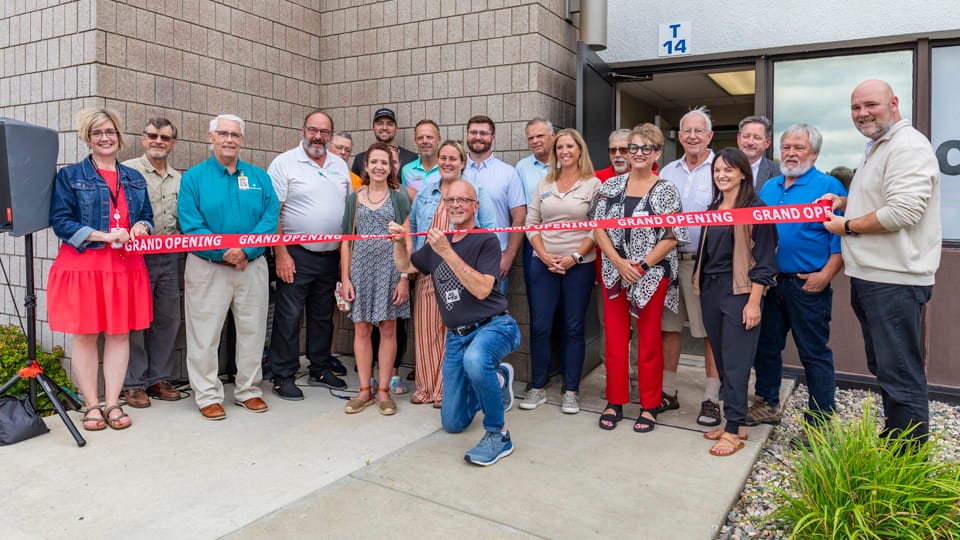Funding takes a project from concept to completion, but the road to securing additional funds can be challenging without a skilled navigator. Don’t let a difficult funding journey impede your project. Widseth’s team of engineers and funding specialist Gail Leverson, MBA, EDFP, can help you get through the requirements and milestones to reach your destination — a funded project.
This is the second in a series of articles in which we’re mapping out the typical steps for some of the more common sources for funding public infrastructure projects in Minnesota. In case you missed it, click here to read about funding a drinking water project via the Minnesota Public Facilities Authority (PFA).
Keep reading for the basic steps to getting your wastewater project through the PFA funding process and click here to download a step-by-step guide.

Navigating the funding process can be challenging. Work with an engineer who is familiar with a variety of funding sources and processes to reach your destination: a funded project for your community.
01. Work with a licensed engineer to prepare a wastewater facility plan, which must address the following:
- Description and evaluation of existing wastewater system and identify needs
- Describe existing residential and nonresidential flows and loadings
- Identify 20-year residential and nonresidential flows and loadings
- Analyze feasible treatment alternatives
- If the area is currently served by individual systems, additional assessment of present individual systems may be required
02. Submit facility plan with additional documentation to the Minnesota Pollution Control Agency (MPCA) by the first Friday in March.
03. Submit a Project Priority List (PPL) wastewater application and PPL Scoring Worksheet.
04. If the wastewater system project is ready to proceed, submit request to Public Facilities Authority (PFA) for placement on the Intended Use Plan (IUP), typically due by the first Friday in June.
05. Draft PPL and IUP are put on public notice in late summer. The lists show the priority ranking of the project and rank for possible funding with Clean Water Revolving Funds (CWRF).
06. Final PPL and IUP lists are published.
06A. Projects with high PPL scores and financial need are considered for Water Infrastructure Funds (WIF). Watch for a future article that highlights this and other funds that your project may qualify for.
07. Projects that are in the fundable range on the IUP must submit plans and specifications to MPCA and loan applications to PFA within 180 days of the publication of the final IUP list.
08. All items must be approved by MPCA by June 30 to retain CWRF funds.
09. After approval of the documents, the project may proceed to advertising.
10. The MPCA and PFA have requirements to follow throughout construction and project closeout, including monthly reports, notice of initiation of operation, payroll compliance, and one year certification report.
It helps to have an expert navigator guide you through any detours or speed bumps you may experience along the way. Widseth’s engineers and funding specialists have traveled these roads many times, and they know when to take a side-trip to explore additional funding. They’re available to help you get your project to its destination.
Watch for future articles in the series where we’ll look at Rural Development (RD) funding for water and wastewater projects as well as other supplemental funding sources. Meanwhile, click the map to download your own guide to getting PFA funds for your wastewater project and give me a call to get started.




